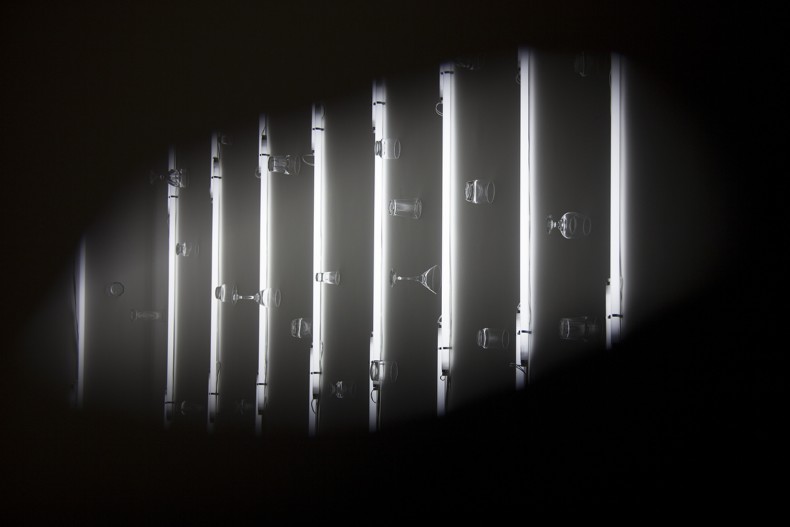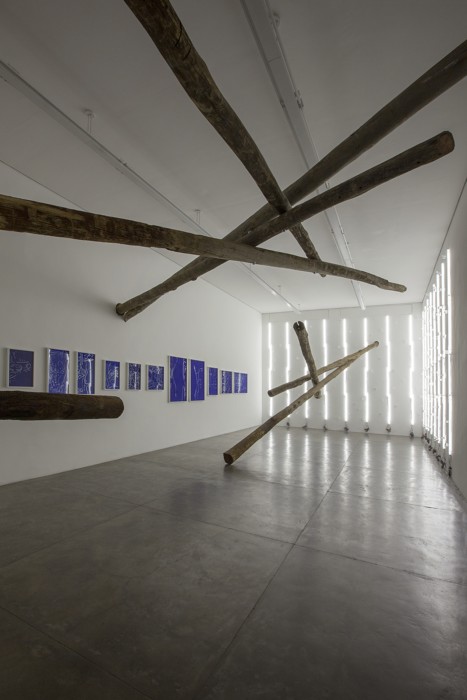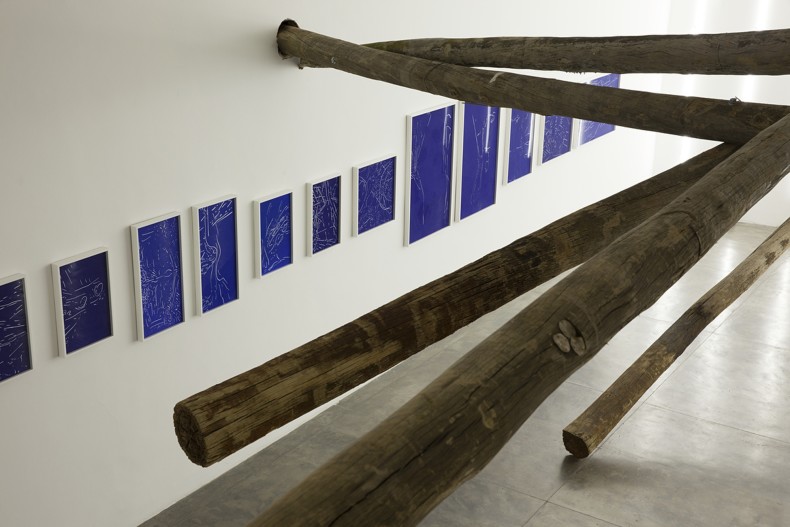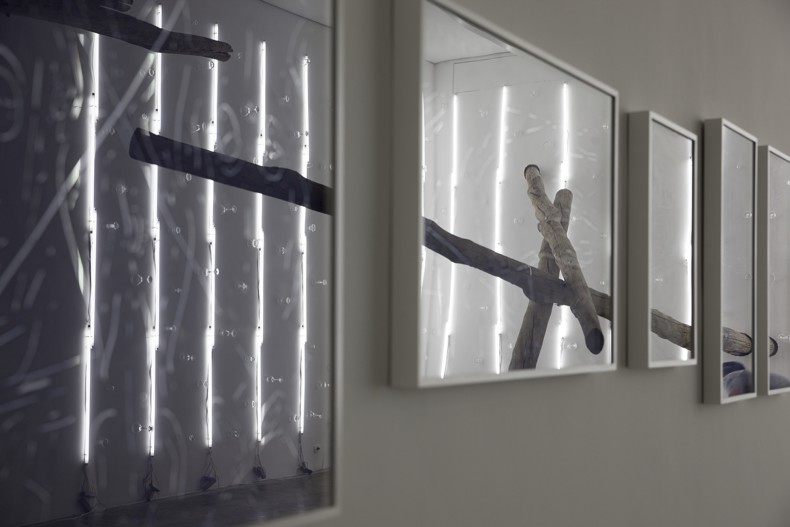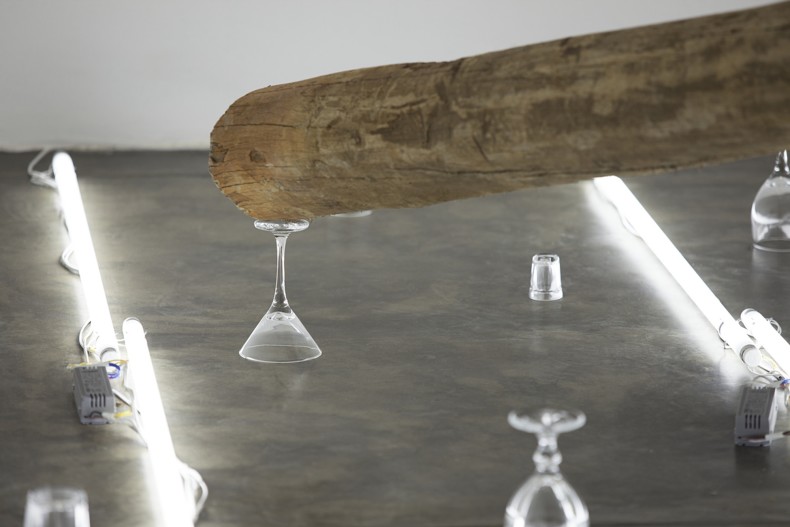Carlito Carvalhosa will have his first solo exhibition at Galeria Nara Roesler beginning on August 30, featuring a mega installation especially designed for the gallery’s facilities. The piece consists of old wooden lighting posts suspended throughout the venue, combined with glass pieces scattered on the floor. At some points, the logs go across the walls, which help keep them up; at other places, they are kept hanging by the intersections of two or more posts.
The main room features large wooden artifacts, alongside drinking glasses and fluorescent lamps attached to the rear of the room. It is as though the floor has been suspended onto the wall. This area also includes roughly 16 small drawings created like “carvings” on the blue paint. At the front of the gallery, the glass window is taken by drinking glasses and lamps, this time laying on the floor and “going through” the window towards the street.
the concept behind the artwork
As they go through the white cube, the posts – useless pieces of urban furniture – are resignified and resignify the place they are in. They bring into the gallery the everyday universe constituted by elements that are at once nature (wooden logs) and human action (lighting posts). In their state of suspension in the environment, which conserves and evidences actions of aesthetical purpose, these logs appear to eternalize the movement through which culture evolves from the savage principle into the complexity of the manmade conglomerate.
Everything in the installation points to the perception of human activity, including its setup – old metal rings have been kept on the extremities of the logs, and the large nuts and screws that secure the joint clamps are visible. Matter seems gravity-free. The gallery becomes the guardian of the suspension, in time and space, of nature converted into culture. And thus its character as art is configured: in the articulation between the two poles that constitute the human being, and in the impression of rendering the transitory eternal.
The drinking glasses and lamps on the floor convey a feeling of fragility to the appearance of imminent though statically-staged fall, as though they could break at any moment. The action of natural wood (the wooden log) is superimposed onto culture (the manmade glass), showing the latter’s susceptibility.
As art historian Lorenzo Mammi put it, “surely, the paradox of the immobility of the transitory is not particular to Carvalhosa’s work only but to all art, and perhaps all form. All formalizations are acts of pride; the natural thing is to let go. In Carvalhosa’s work, however, this issue seems to take on a more restless character and therefore become more central. Not many works by other artists make it so evident that to formalize is to stem a matter that flows, to establish a horizontal incision onto a descent that is slow, but cannot be stopped forever. Carlito Carvalhosa’s work speaks of the uncomfortable coexistence of time and eternity.”

